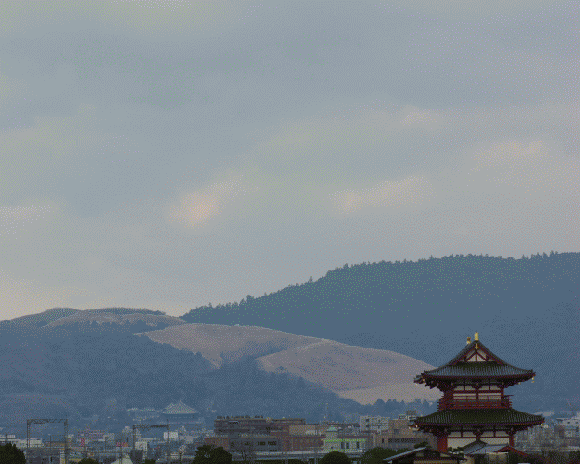
Have you ever wondered what the most spectacular views in Japan are? Allow us to enlighten you!
Recently, we told you about Japan’s top three night views according to the Night View Summit 2015. You may have also heard about Japan’s Three Scenic Spots, one of the many lists of the top three this or that in Japan. So, what’s the deal with all these lists? And who designates them? Find out while checking out some of the best scenery Japan has to offer.
The Japanese government designates Places of Scenic Beauty (meisho) and Special Places of Scenic Beauty (tokubetsu meisho). The Three Scenic Spots (Nihon Sankei), perhaps the oldest of the lists and probably the most popular still used today, is attributed to the scholar Hayashi Gaho in 1643. These big three also landed on the government designated list of Places of Scenic Beauty.
The Nihon Sankei are:
- Matsushima 松島 (Miyagi Prefecture)
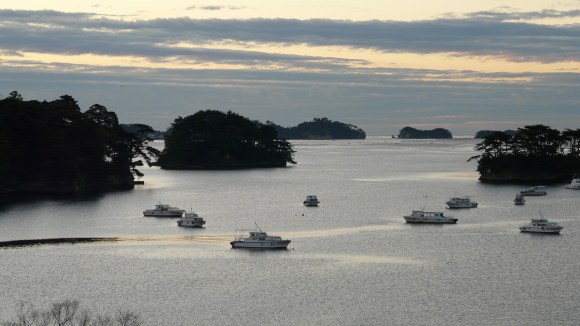
This view of Matsushima is idyllic, with boats floating on the calm waters of the bay. This body of water is also famous for its oysters.
Be sure to check out Matsushima on the night of a full moon, too. For about two hours you can see a glittering road, a reflection of the moon, on the sea. Once the moon has risen, it casts shadows of the islands and trees on the water.
2. Amanohashidate 天橋立 (Kyoto Prefecture)
Amanohashidate (“The Bridge to Heaven”) is in northern Kyoto. From the top of the mountain at Kasamatsu Park, you look over a sandbar lined with pine trees that reaches out across the sea and connects to another land mass on the other side.
The optimal view is actually not the one above, however
▼ Believe it or not, this is said to be the optimal view of Amanohashidate!
To achieve this view, you’ll have to do what the Japanese do: matanozoki. To experience it, stand on the designated matanozoki platform with your back to the sea. Make sure you have a wide stance. Place your hands on your thighs and bend over, butt in the air, until you can see through your legs! This grandiose pose makes the sand bar look like “a land bridge to heaven.” Or so they say. I suspect it may have something to do with all the blood rushing to your head.
See the “Amanohashidate Bridge of Fire” on Marine Day (the third Monday in July) when 300 torches are lit in the evenings making a “fire bridge” that joins the two landmasses.
3. Itsukushima Torii Gate 厳島神社の鳥居 (Hiroshima Prefecture)
Itsukushima shrine is one of Japan’s 18 UNESCO World Heritage Sites. When the tide comes in, the water surrounds the shrine as well as the torii gate making it look like the giant vermilion gate is floating. The view is equally beautiful at night when the structure is bathed in artificial light, creating a completely different photo opportunity. For even more amazing views of the otorii (big gate), be sure to attend the fireworks festival at the beginning of the Obon holiday in August.
New Three Views of Japan
The next three views (numbers 4-6) are from a different list. In 1915, a publishing company called Jisugyo no Nishonsha decided to hold a contest to determine the New Three Views of Japan (Shin Nihon Sankei). Their results were as follows:
4. Onuma 大沼 (Hokkaido)
Onuma is the name of the large pond in the Onuma Quasi-National Park in southwest Hokkaido. The outline of the oddly shaped Kamogatake active volcano can be seen in the reflection of the pond.
5. Miho no Matsubara 三保の松原 (Shizuoka Prefecture)
From Miho no Matsubara you can see across Suruga Bay to Mount Fuji and the Izu Peninsula. This 7-kilometer (4.3-mile) pine tree-studded beach also lands on another of Japan’s lists: the top 100 white sand beaches and green pine groves. The scene was favored by ukiyoe woodblock print artist Hiroshige Utagawa (1797–1858).
▼ You were probably hoping for a better view, so here is Hiroshige’s decidedly more beautiful one.
The white sand has mostly disappeared these days, but before we tell you why, we should tell you the legend called “Hagoromo” (“The Feathered Robe”). The story goes that a celestial maiden was flying over Miho no Matsubara and, enticed by the beauty of the beach, she alighted on this bewitching land. She hung her feathered robe on a pine tree, as celestial maidens tend to do, and dipped into the water. While the lovely woman was bathing, a rather perverse man came along, seized her robe and wouldn’t give it back, demanding that she perform a heavenly dance for him.
What’s a celestial maiden to do? She wanted her cloak back! So she “danced in the spring twilight,” and then flew away under a full moon in her feathered robe, leaving the salacious man looking on longingly. What a creep!
The revered pine tree, named Hagoromo no Matsu, is at least 650 years old and is a local tourist attraction. But the story gets even more sordid because our own greedy selves are responsible for the disappearance of the white sand beach. It is said that when Japan built the first Shinkansen, back in the early 1960s, so much white sand was used to make the concrete that it all but disappeared. Perhaps that’s why there have been no celestial maidens in feathered robes gracing the shores since.
6. Yabakei 耶馬渓 (Oita Prefecture, Kyushu)
Let’s not pick on this gorge just because it doesn’t have a lake, sea, or mountain around it to enhance its view. This lonely chunk of rock on the Yamakuni River in Oita Prefecture’s Yaba-Hita-Hikosan Quasi-National Park probably would have gone completely unnoticed had it not been designated a Shin Nihon Sankei (later to become an official government meisho). It’s not often gorges make it into our Top 12 lists, so we should encourage it. Let’s hear a round of applause! It does have its charms. Or maybe you just had to be there.
Three Major Night Views of Japan (Nihon Sandai Yakei)
Then there’s the Three Major Night Views of Japan, which will be touted on any of these city’s websites. These are all called “Ten Million Dollar Views,” although I’d think one million would have done the trick.
7. Hakodate 函館 (Hokkaido)
This night view, as seen from Mt. Hakodate, reportedly earned three out of three stars in the Michelin Green Guide. Fireworks and a cruise ship are surefire props to enhance any night-time scene.
8. Kobe 神戸 (Hyogo Prefecture)
Kobe’s famed night view also takes in Osaka Bay.
9. Nagasaki 長崎 (Nagasaki Prefecture, Kyushu)
You can take a cable car to the top of Mount Inasa where there is an observation platform.
The New Three Major Night Views of Japan
Of course there had to be a New Three Major Night Views of Japan! In April 2003, a nonprofit organization called, get this, “New Three Major Night Views of Japan and the 100 Night Views of Japan Club” selected the New Three Major Night Views of Japan (Shin Nihon Sandai Yakei). The more the merrier, right?
10. Mount Sarakura 皿倉山 (Kitakyushu, Fukuoka Prefecture)
▼ We trust the view is great, but show us where we can sit and enjoy it for a while!
After you take the Hobashira Cable Car or the Sarakurayama Slope Car, you’ll want to enjoy a room with a view. And you don’t have to wait until night time either.
11. Kofu Basin 甲府 (Yamanashi Prefecture)
Any famous view in Yamanashi Prefecture is bound to feature Mount Fuji in it somewhere! So while the night view may be fantastic, it breaks our heart to think you won’t be able to see Mount Fuji, so we’ve given you the daytime view instead. You’re welcome.
▼ Until they put lights on Mt. Fuji (and don’t put it past them) the daytime view may be better than a night view.
Okay, okay, if you really want to see the night view of Kofu Basin, and you have some patience, here’s a three-minute time-lapse video that shows the view below a waning and waxing moon. It’s quite soothing actually, if you have the patience. If not, then move on to our super-wow last view…
12. Mount Wakakusa 若草山 (Nara Prefecture)
A pyrotechnic dream night view, this scene is enhanced by the burning off of the dead grass on Mount Wakakusa with a simultaneous fireworks performance that takes place annually on the fourth Saturday in January. A part of Heijo Imperial Palace, a UNESCO World Heritage Site, is in the foreground. Wow–just wow! Now that just might be worth 10 million dollars.
Top image: Wikimedia/名古屋太郎

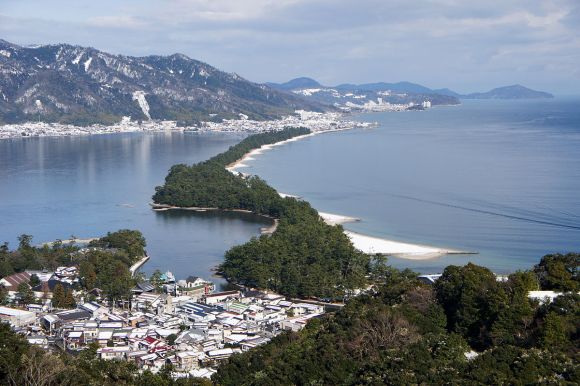
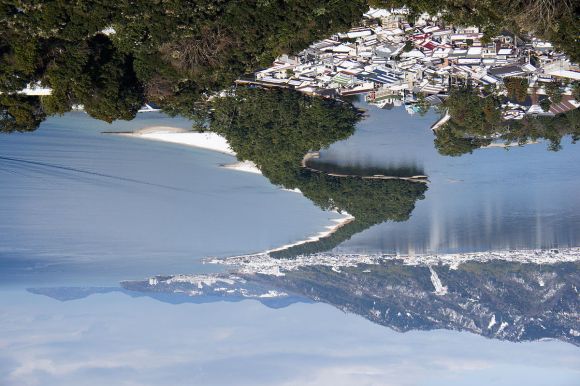
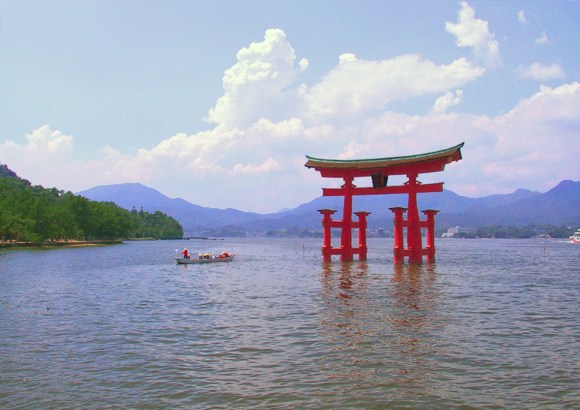
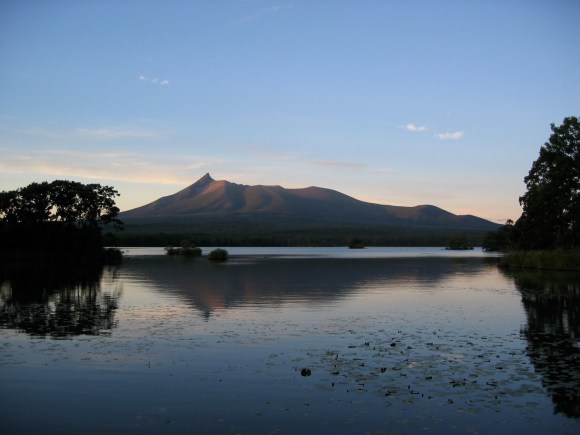
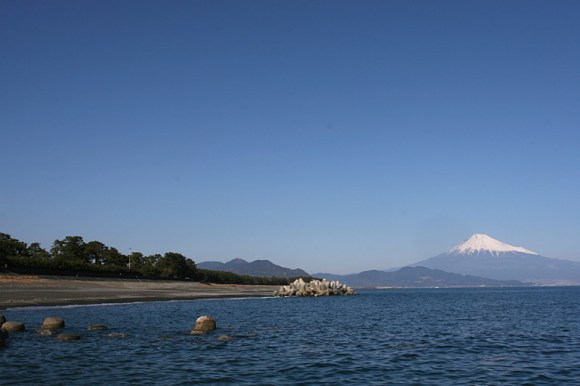
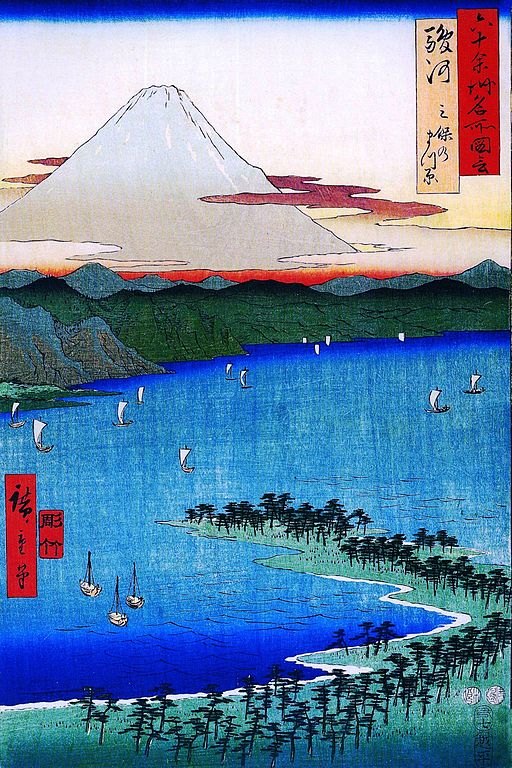
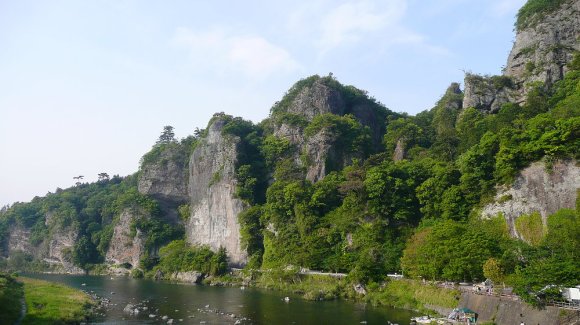
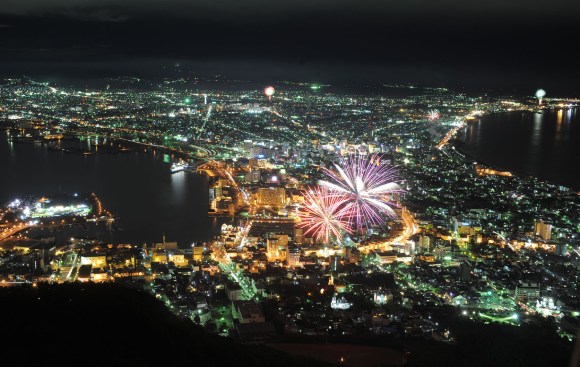
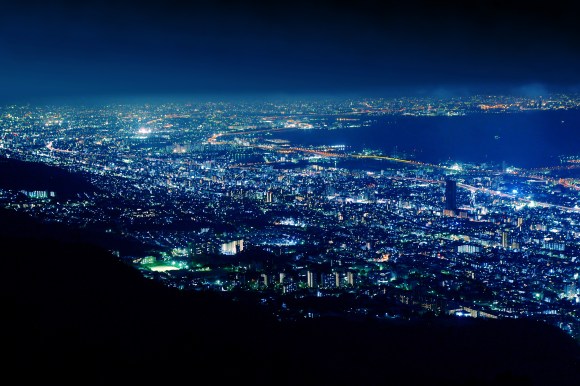
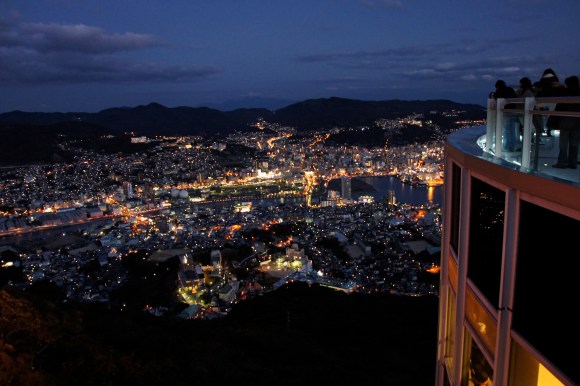
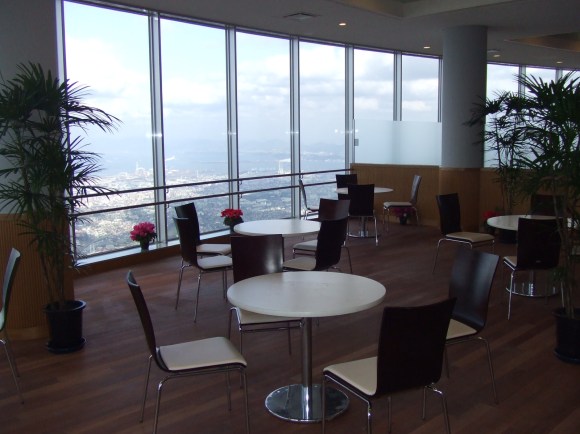
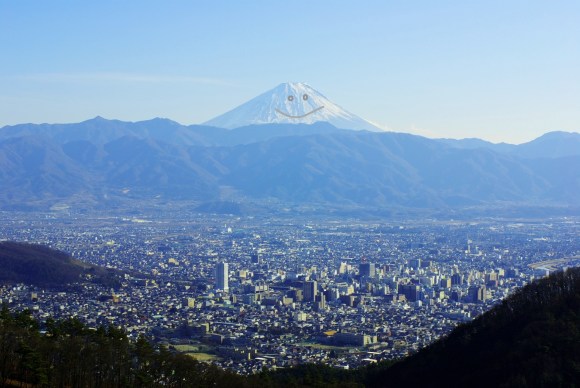
 The top 10 hot springs Japanese travelers want to visit this fall
The top 10 hot springs Japanese travelers want to visit this fall Happy New Year! Japan ranks top spots to view the first sunrise of 2019
Happy New Year! Japan ranks top spots to view the first sunrise of 2019 Five uninhabited Japanese islands you can buy right now
Five uninhabited Japanese islands you can buy right now Top 10 places to see a spectacular sunset in Japan
Top 10 places to see a spectacular sunset in Japan See a whole other side of Kyoto in this beautiful, quintessentially Japanese train, coming soon
See a whole other side of Kyoto in this beautiful, quintessentially Japanese train, coming soon McDonald’s new Happy Meals offer up cute and practical Sanrio lifestyle goods
McDonald’s new Happy Meals offer up cute and practical Sanrio lifestyle goods More foreign tourists than ever before in history visited Japan last month
More foreign tourists than ever before in history visited Japan last month All-you-can-drink Starbucks and amazing views part of Tokyo’s new 170 meter-high sky lounge
All-you-can-drink Starbucks and amazing views part of Tokyo’s new 170 meter-high sky lounge The oldest tunnel in Japan is believed to be haunted, and strange things happen when we go there
The oldest tunnel in Japan is believed to be haunted, and strange things happen when we go there Arrest proves a common Japanese saying about apologies and police
Arrest proves a common Japanese saying about apologies and police Wear Japan’s most iconic landmark on your shoes with this Adidas collaboration【Photos】
Wear Japan’s most iconic landmark on your shoes with this Adidas collaboration【Photos】 Is the new Shinkansen Train Desk ticket worth it?
Is the new Shinkansen Train Desk ticket worth it? Starbucks reopens at Shibuya Scramble Crossing with new look and design concept
Starbucks reopens at Shibuya Scramble Crossing with new look and design concept Beautiful Sailor Moon manhole cover coasters being given out for free by Tokyo tourist center
Beautiful Sailor Moon manhole cover coasters being given out for free by Tokyo tourist center We tried Japan’s Strawberry Daifuku? liqueur, one of three dessert-themed liqueurs
We tried Japan’s Strawberry Daifuku? liqueur, one of three dessert-themed liqueurs Disney princesses get official manga makeovers for Manga Princess Cafe opening in Tokyo
Disney princesses get official manga makeovers for Manga Princess Cafe opening in Tokyo We try out “Chan Ramen”, an underground type of ramen popular in the ramen community
We try out “Chan Ramen”, an underground type of ramen popular in the ramen community Beautiful new Final Fantasy T-shirt collection on the way from Uniqlo【Photos】
Beautiful new Final Fantasy T-shirt collection on the way from Uniqlo【Photos】 Foreign English teachers in Japan pick their favorite Japanese-language phrases【Survey】
Foreign English teachers in Japan pick their favorite Japanese-language phrases【Survey】 There’s a park inside Japan where you can also see Japan inside the park
There’s a park inside Japan where you can also see Japan inside the park Japanese convenience store packs a whole bento into an onigiri rice ball
Japanese convenience store packs a whole bento into an onigiri rice ball Studio Ghibli releases Kiki’s Delivery Service chocolate cake pouches in Japan
Studio Ghibli releases Kiki’s Delivery Service chocolate cake pouches in Japan Japan’s bone-breaking and record-breaking roller coaster is permanently shutting down
Japan’s bone-breaking and record-breaking roller coaster is permanently shutting down New definition of “Japanese whiskey” goes into effect to prevent fakes from fooling overseas buyers
New definition of “Japanese whiskey” goes into effect to prevent fakes from fooling overseas buyers Foreign passenger shoves conductor on one of the last full runs for Japan’s Thunderbird train
Foreign passenger shoves conductor on one of the last full runs for Japan’s Thunderbird train Our Japanese reporter visits Costco in the U.S., finds super American and very Japanese things
Our Japanese reporter visits Costco in the U.S., finds super American and very Japanese things Kyoto bans tourists from geisha alleys in Gion, with fines for those who don’t follow rules
Kyoto bans tourists from geisha alleys in Gion, with fines for those who don’t follow rules Studio Ghibli unveils Mother’s Day gift set that captures the love in My Neighbour Totoro
Studio Ghibli unveils Mother’s Day gift set that captures the love in My Neighbour Totoro Domino’s Japan now sells…pizza ears?
Domino’s Japan now sells…pizza ears? New Japanese KitKat flavour stars Sanrio characters, including Hello Kitty
New Japanese KitKat flavour stars Sanrio characters, including Hello Kitty Sales of Japan’s most convenient train ticket/shopping payment cards suspended indefinitely
Sales of Japan’s most convenient train ticket/shopping payment cards suspended indefinitely Sold-out Studio Ghibli desktop humidifiers are back so Totoro can help you through the dry season
Sold-out Studio Ghibli desktop humidifiers are back so Totoro can help you through the dry season Japanese government to make first change to romanization spelling rules since the 1950s
Japanese government to make first change to romanization spelling rules since the 1950s Ghibli founders Toshio Suzuki and Hayao Miyazaki contribute to Japanese whisky Totoro label design
Ghibli founders Toshio Suzuki and Hayao Miyazaki contribute to Japanese whisky Totoro label design Doraemon found buried at sea as scene from 1993 anime becomes real life【Photos】
Doraemon found buried at sea as scene from 1993 anime becomes real life【Photos】 Tokyo’s most famous Starbucks is closed
Tokyo’s most famous Starbucks is closed One Piece characters’ nationalities revealed, but fans have mixed opinions
One Piece characters’ nationalities revealed, but fans have mixed opinions We asked a Uniqlo employee what four things we should buy and their suggestions didn’t disappoint
We asked a Uniqlo employee what four things we should buy and their suggestions didn’t disappoint Princesses, fruits, and blacksmiths: Study reveals the 30 most unusual family names in Japan
Princesses, fruits, and blacksmiths: Study reveals the 30 most unusual family names in Japan Studio Ghibli’s new desktop Howl’s Moving Castle will take your stationery on an adventure
Studio Ghibli’s new desktop Howl’s Moving Castle will take your stationery on an adventure Laser-cut, 360-degree “book” lets you bring Mt. Fuji into your home
Laser-cut, 360-degree “book” lets you bring Mt. Fuji into your home Quiz time! How many of these photos of Japanese places can you identify?【Photos】
Quiz time! How many of these photos of Japanese places can you identify?【Photos】 The 100 Soundscapes of Japan: A list of Japan’s greatest natural, cultural, and industrial sounds
The 100 Soundscapes of Japan: A list of Japan’s greatest natural, cultural, and industrial sounds Sakura in Japan 2019: The best spots for hanami cherry blossom viewing
Sakura in Japan 2019: The best spots for hanami cherry blossom viewing Nine places to take unforgettable social media photos in Japan
Nine places to take unforgettable social media photos in Japan Japan chooses its top 3 night views【Photos】
Japan chooses its top 3 night views【Photos】 Japan dominates the list of most visited Google Street View locations in Asia
Japan dominates the list of most visited Google Street View locations in Asia TripAdvisor Japan announces the country’s 10 favorite shrines and temples
TripAdvisor Japan announces the country’s 10 favorite shrines and temples The top 5 places to see the sun set in Japan
The top 5 places to see the sun set in Japan This Year of the Rabbit, visit some of the best Japanese sightseeing spots related to rabbits
This Year of the Rabbit, visit some of the best Japanese sightseeing spots related to rabbits The top five places to survive a real attack by Titans in Japan
The top five places to survive a real attack by Titans in Japan New Suntory beer cans feature 15 different Shinkansen bullet trains and local landscapes
New Suntory beer cans feature 15 different Shinkansen bullet trains and local landscapes Hiyoriyama newly crowned as Japan’s Shortest Mountain
Hiyoriyama newly crowned as Japan’s Shortest Mountain The most popular places in Japan for viewing sakura in 2024, according to local travel agency
The most popular places in Japan for viewing sakura in 2024, according to local travel agency Whimsical new Vietnamese bridge looks like it’s held up by the hands of gods
Whimsical new Vietnamese bridge looks like it’s held up by the hands of gods
Leave a Reply